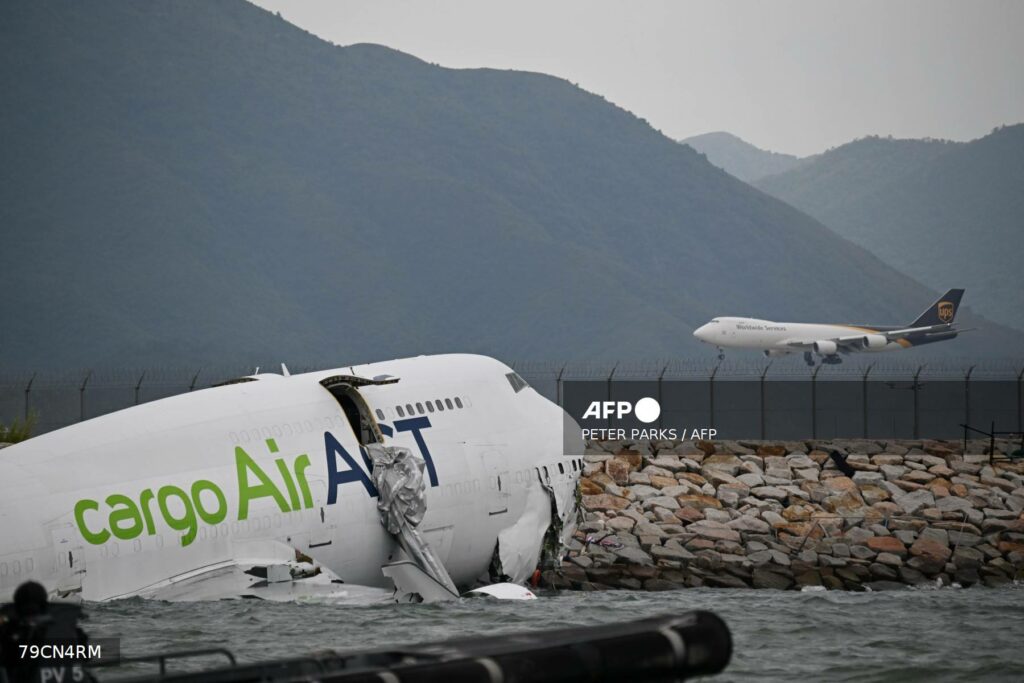A cargo plane from Dubai veered off the runway at Hong Kong International Airport on Monday morning, crashed through a security fence, and plunged into the sea, killing two airport security officers in a patrol car.
According to officials, the Boeing aircraft was attempting to land at around 4 a.m. local time (8 p.m. GMT Sunday) when it lost control, struck a security vehicle, and skidded off the north runway into the water. The Hong Kong Airport Authority described the incident as one of the most serious since the airport began operations in 1998.
Steven Yiu, Executive Director of Airport Operations, said the cargo jet “went off from the north runway upon landing and crashed through the fence and into the sea.” He confirmed that the patrol car was not on the runway but was stationed outside the fence when the aircraft veered off course and rammed into it.
A 30-year-old man was declared dead at the scene, while another 41-year-old officer died later in hospital. Divers from the Fire Services Department recovered both victims from the submerged car, which was found about five metres (16 feet) from the shore.
Airport photos and video clips circulating online showed the plane’s fuselage half-submerged in seawater, with an emergency slide deployed.
Emirates Airlines said the plane’s crew were safe and uninjured. The airline explained that the aircraft involved was being operated by Act Airlines on a temporary or “wet lease” arrangement, meaning the Turkish cargo operator provided both the aircraft and crew.
Emirates added that there was no cargo onboard during the incident and that “weather and runway conditions were safe and met all operational standards” at the time of landing.
Officials released a preliminary diagram showing that the aircraft made a sharp left turn midway down the runway before crashing. The plane did not issue an emergency signal or respond to air traffic control radio calls before the accident.
The airport’s north runway was immediately closed for investigation, though the other two runways continued normal operations. Airport Authority Hong Kong said the closure was not expected to disrupt overall flight schedules.
The Transport and Logistics Bureau expressed deep concern, confirming that the Air Accident Investigation Authority had launched a full investigation to determine the cause of the crash. Police said they would not rule out a criminal probe if negligence is suspected.
Emergency helicopters and rescue boats were deployed to the crash site, while divers searched for debris and evidence.
The crash comes less than a year after Hong Kong began operations on its new third runway, part of a HK$142 billion (US$18 billion) expansion project designed to strengthen the city’s role as a global aviation hub.
The massive expansion, which took eight years to complete, was intended to handle growing air traffic and cargo demand. Hong Kong International Airport is one of the world’s busiest for cargo movement, serving as a key logistics hub for Asia.
Officials said Monday’s accident will not significantly impact airport operations, though safety procedures are being reviewed.
The tragic incident has shocked aviation and logistics circles, given Hong Kong’s long-standing record of safe flight operations. The last major aviation accident in the city occurred in the 1990s before the relocation of the airport from Kai Tak to Chek Lap Kok.
